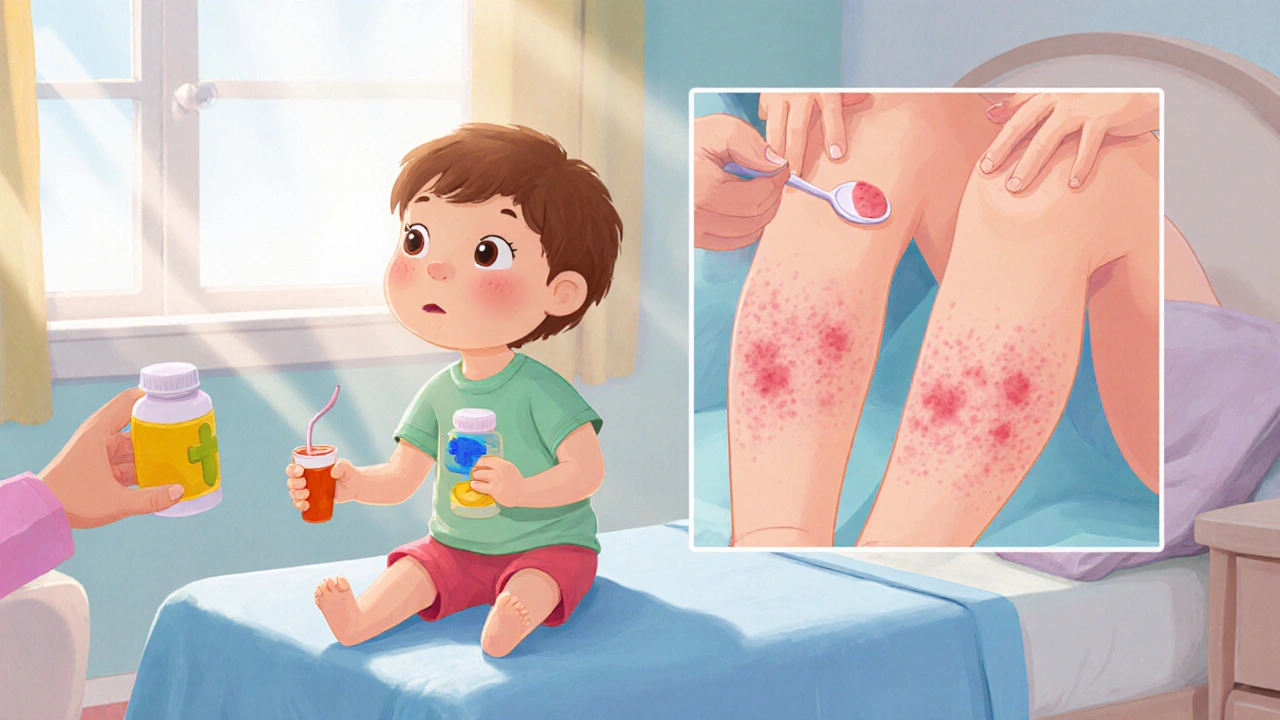Pediatric Drug Allergy
When dealing with Pediatric Drug Allergy, an adverse immune response to a medication in children. Also known as Drug Hypersensitivity, a broader term for immune‑mediated drug reactions, this condition can range from mild rash to life‑threatening anaphylaxis. Antihistamines, medications that block histamine receptors to reduce itching and swelling are often the first line of treatment for mild symptoms, while Allergy Testing, skin prick or intradermal tests that identify specific drug sensitivities helps clinicians pinpoint the offending agent. Severe cases may progress to Anaphylaxis, a rapid, systemic reaction that can cause airway collapse and shock, demanding immediate epinephrine administration. Understanding how these entities interact—hypersensitivity triggers testing, testing informs antihistamine use, and both aim to prevent anaphylaxis—sets the stage for safer medication management in kids.
Children aren’t just small adults; their immune systems react differently to drugs due to developmental factors and genetic predispositions. Common culprits include antibiotics like amoxicillin, non‑steroidal anti‑inflammatory drugs (NSAIDs), and even some vaccines. A careful medication history, combined with parental observations of timing and symptom patterns, is essential. When a reaction is suspected, doctors often start with a detailed skin examination and may perform a graded drug challenge under close monitoring. This approach balances the need to identify tolerable alternatives while minimizing risk. Many families also benefit from education about cross‑reactivity—how an allergy to one medication can predict sensitivity to related drugs—so they can avoid entire drug classes when appropriate.
Managing Pediatric Drug Allergies in Everyday Life
Effective management hinges on three pillars: avoidance, preparedness, and education. Once a specific drug is identified, avoidance means updating medical records, informing schools, and using medical alert bracelets. Preparedness involves having rescue medications, such as an epinephrine auto‑injector, on hand and teaching caregivers how to use them correctly. Education extends to the child, age‑appropriately, so they understand why certain medicines are off‑limits and how to recognize early warning signs. Clinical guidelines recommend a written emergency action plan that outlines steps from the first symptom to emergency services. Regular follow‑up appointments allow providers to reassess the allergy status, especially as the child grows and new medications become necessary. By integrating these strategies, families can reduce anxiety, prevent severe reactions, and ensure that children receive the treatments they need without unnecessary interruptions.
Below you’ll find a curated selection of articles that dive deeper into each of these areas—ranging from detailed drug comparisons to practical guides on picking the right antihistamine for your child. Browse the list to get actionable insights, real‑world tips, and the latest research that will help you navigate pediatric drug allergies with confidence.

